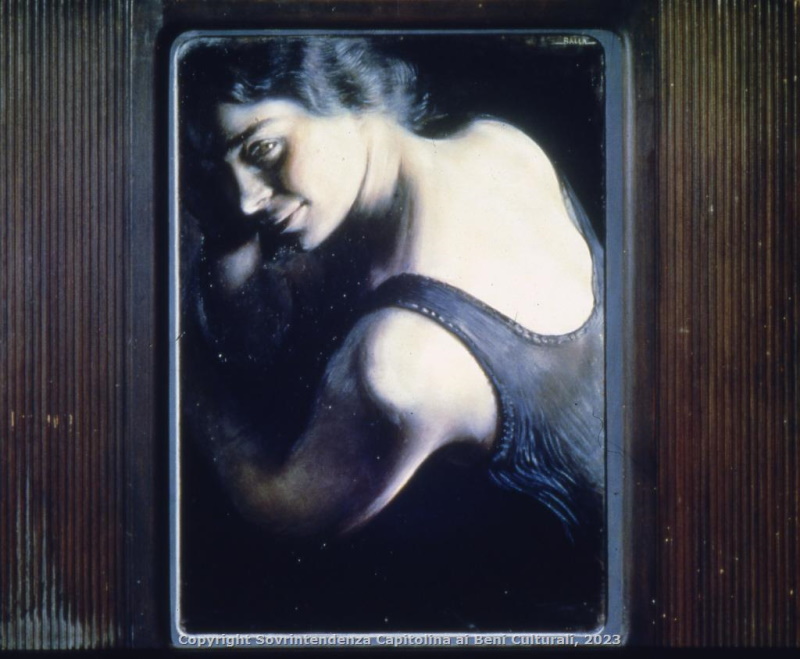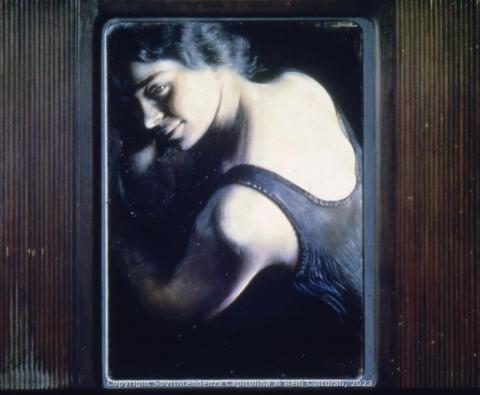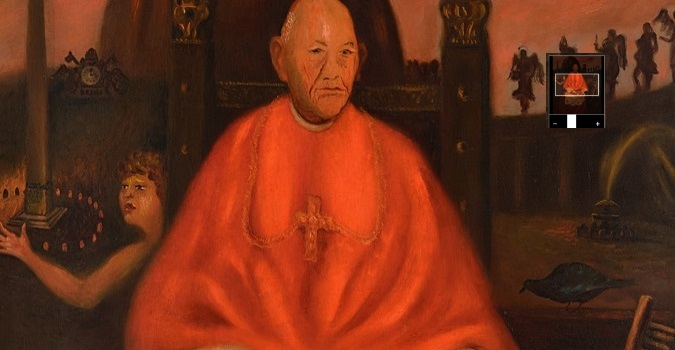L'Opera del mese - October 2023
Giacomo Balla
( Torino 1871 - Roma 1958)
Il dubbio, 1907-08
Oil on paper, 67 x 50 cm
Inv. AM 56

The artwork, which can be dated between 1907-1908, represents the years when Balla was between the Divisionist movement, that he had approached from 1905, and the Futurist turn, dating from 1909. Il dubbio, where the artist portrays his wife Elisa, is representative of this transition, where his interest in light and movement is translated into a play of light and shadow that emphasises the attentive and mysterious profile of a woman. Elisa's body rises from the dark background in a three-quarter profile and takes form through an external light source that gives a definition to her shoulders and the left side in her face. The strong chromatic difference between the black dress, the dark hair and the thick brow, and the lightness of the exposed shoulders and face is evident. The painting's composition appears perfectly coordinated in all its parts, thanks to the torsion of the bust and head that allows the space to be filled in a way that is both studied and natural at the same time.
There are many portraits of Elisa painted by Balla and they are all part of a first production strongly characterised by the investigation into the possibilities of light and its chromatic qualities. In particular, in the painting Il dubbio, lighting defines the image in a solid fashion, becoming an instrument for analysing reality and a means for making matter perceptible.
The connections with the image in photography are also evident, due to the diagonal cut of the representation, which evokes the fashionable photos of the turn of the century, far from the usual patterns of the genre with the figure posing in front of the painter. Photography must have been familiar to Balla from his youth, as his father was an enthusiast in the subject, and was above all a means of experimenting with the depiction of movement. All this results in an 'instantaneous' representation of Elisa, whose bright, textured gaze emerges from the shadows in a vaguely Caravaggesque reference, in an expressive and dynamic pose that invites the viewer into dialogue and complicity.
In 1908, the painting was presented and purchased at the LXXVII Esposizione della Società Amatori e Cultori di Roma. Later, in 1925, it was placed in Palazzo Caffarelli in the rooms annexed to the Musei Capitolini where the Galleria d'Arte Moderna was housed for a period. The work was also exhibited in 1931 when the Gallery, closed in 1929, reopened as the 'Galleria Mussolini'. In 1939, it was transferred to the Galleria Nazionale d'Arte Moderna in temporary storage with part of the municipal collection.
Return to the section > The Galleria d'Arte Moderna artwork of the month







































